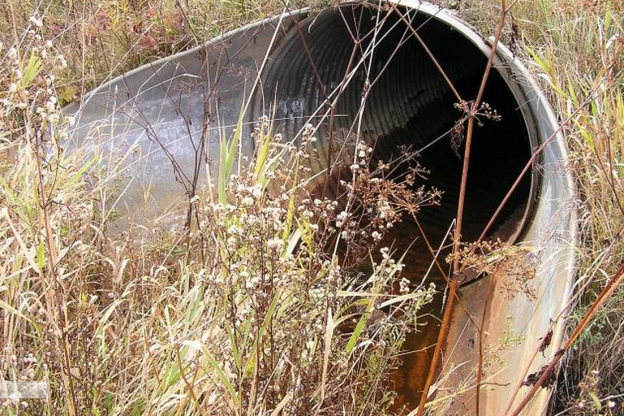

Little mine problems
Little mines, not little problems
I have written several times mentioning the Flambeau mine near Ladysmith, Wisconsin, the mine touted by the industry as a example of a sulfide mine that didn’t pollute, most recently in Trouble in the Grotto. The photo is from a Minnesota Public Radio web story on the mine from 2009.
Here’s what reporter Bob Kelleher wrote back then:
Ladysmith, Wis. — A closed Wisconsin mine is playing a prominent role in the ongoing debate over mining for metals like copper and nickel, a debate that’s currently raging in Northern Minnesota.
Depending on whom you talk to, the Flambeau mine near Ladysmith, Wisconsin, is either 1) a perfect example how metals like copper can be mined without harming the environment, or 2) it’s a sad example of regulators ignoring serious problems.
I’d pick door number two, kids.
Door number two is the smart choice because we know in hindsight that the operator of the Flambeau mine was found in a 2012 federal court judgement to be guilty of several violations of the federal Clean Water Act.
Trouble in the Grotto describes risks to surface waters that were not even part of the lawsuit: the failure or overtopping of “infiltration basins” meant to collect the deadly mine runoff; I use the word “deadly” because that is exactly what it is: a killer of all things aquatic.
The culvert shown in the photo is where water that escapes from the infiltration basins goes. What’s on the other side of the culvert, you ask? Well, it’s Stream C:
In 2010, the Wisconsin Resources Protection Council (WRPC) petitioned the Wisconsin Department of Natural Resources (WDNR) to add Stream C at the Flambeau Mine site to the state’s list of “impaired waters” due to copper and zinc contamination linked to the Flambeau Mine operation. Since at least 1998, Flambeau Mining Company (FMC) had been discharging contaminated stormwater runoff from an on-site biofilter to Stream C on a routine basis without a Clean Water Act permit. Stream C is a tributary of the Flambeau River. Click here to see photos and diagrams of the stream and biofilter.
Swell.
But the larger point — as Katherine Kersten would doubtlessly say — is that the Flambeau mine is tiny, a 35 acre pit with a 181 acre “footprint.” In comparison, the proposed PolyMet mine is a whopper, a 450 acre pit (over a half square mile) that will be as much as 840 feet deep, with a 3,000 acre footprint.
But there is another big difference between the two mines that makes PolyMet’s proposal more dangerous by an order of magnitude or two. At Flambeau, there is no tailings basin or containment, because the mine operator hauled everything away for processing. PolyMet proposes a “concentrator” operation that will produce tailings — ground up sulfide rock that is begging to turn itself into sulphuric acid. Tailings are typically “stored” in ponds or basins to keep them from blowing around. Tailing basins dams and berms get overtopped and fail, too.
The Flambeau deposit was 10% copper; the PolyMet site is less that 1% copper.
Guess which one will be bigger producer of mining waste, and therefore acid and heavy metals runoff?
If you have big problems from little mines, what do you get from a big mine?
Thanks for your feedback. If we like what you have to say, it may appear in a future post of reader reactions.

